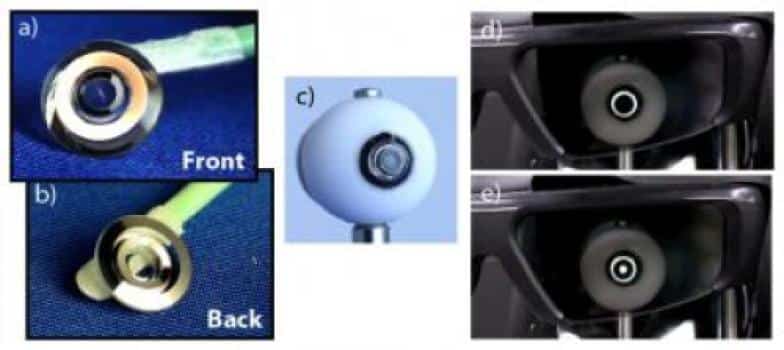Until now, AMD patients had to use bulky external telescopes or undergo surgery to implant micro telescopes

Contact lenses correct the focus of the vision but to this day cannot restore the visual acuity in those suffering from the phenomenon of macular degeneration (macular degeneration), the leading cause of blindness among adults in the Western world.
This is because simply correcting visual focus cannot restore vision loss in the center of the visual field caused by damage to the retina caused by AMD. Now researchers from the USA and Switzerland, led by Prof. Joseph Ford from the University of California, San Diego, say that they will develop thin telescopic contact lenses that can switch between normal vision and magnified vision. When switched to magnified vision mode, the system can provide AMD patients with a way to improve their vision.
The findings were published in the open journal Optics Express of the Optical Society

Light-enhancing visual aids help AMD patients by spreading the light to undamaged parts of the retina. Optical magnification systems can assist patients in a variety of daily activities such as reading, face recognition and self-care. However, these aids are not widely distributed because they require heavy and bulky telescopes that interfere with social interaction or micro telescopes that require surgery to be implanted in the patient's eye.
"For a visual aid to be accepted, it is necessary for it to be comfortable and not stand out" says Eric Tremblay of the Ecole Polytechnique École de Lausanne in Switzerland (EPFL). A contact lens is an attractive compromise between the telescopes that need to be worn on the head and the surgery to implant micro telescopes," says Tremblay.
The lenses developed by Ford's team make use of a surface consisting of finely adjusted mirrors that form a telescope integrated within the sight lens that is only slightly more than one millimeter thick. The lens has a dual mode - the center of the lens provides unmagnified vision, while the ring telescope located at the edge of the lens magnifies the image 2.8 times.
To switch between enhanced and normal vision, users must use a pair of liquid crystal glasses, originally designed for viewing on XNUMXD televisions. These glasses selectively block the magnifying part of the lens or the normal part. Following the change in the passive state of the lens, the glasses electrically charge the direction of the polarized light. This way it is possible to choose between one direction and another to change the contact lens modes.
"In the future, I hope it will be possible to get to the root of the disease and develop effective treatments for it or even develop a prosthetic retina," says Tremblay. "The ideal reality for image intensifiers is that they will be unnecessary, but until we get there, contact lenses may provide a way to improve the quality of life of AMD patients.
